A Comprehensive Guide to the Health Benefits of Beets: Unleashing the Power of Purple
What are Beets?
You’ve seen them, the glorious maroon jewels hidden beneath earthy roughage in grocery bins or farmer’s market stands. What you have been looking at are beets, and root vegetables with an earthy taste that’s as unique as their color. As intriguing as their deep purple hue might be, beets are equally fascinating on the inside holding a treasure trove of health benefits. The health benefits of beets are plenty, there are so many different types of beets…and so many different ways to prepare and consume them. And, get those gorgeous Instagram beet-stained fingers too.
Historical Context: Use of Beets Through the Ages
“Once upon a beet…” Okay, hold on. I might not exactly take you on a fairy tale voyage, but bear with me here. Human use of beets dates back to Neolithic times, when people used them primarily as a medicinal plant, including guess what—aphrodisiacs. Fast forward to the Middle Ages, and beets had snuck into European cuisines and have since stayed, much like your favorite sitcom reruns.
Nutritional Composition of Beets
By the 20th century, beets’ unnoticed superpowers began to get some recognition. Packed with vitamins, minerals, and antioxidants, beets are like nature’s version of multivitamins. Plus, they have this super cool compound called nitrates which gets your blood pumping. Quite literally.
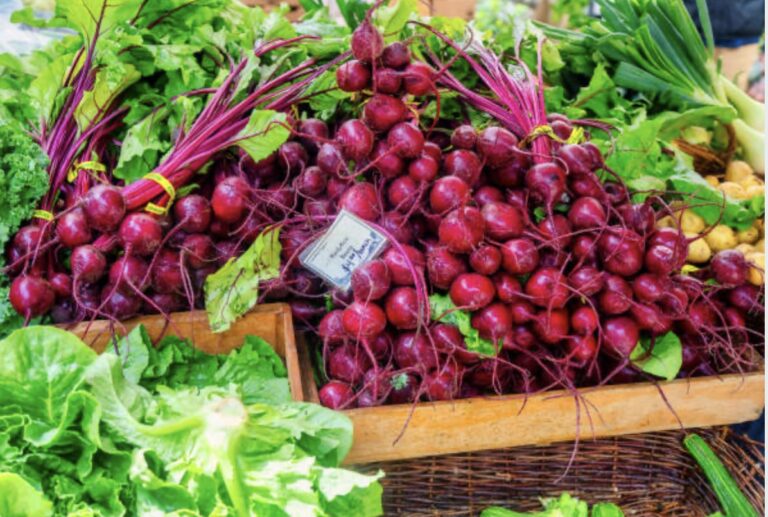
The Cardiovascular Benefits of Beets
Beetroot and Blood Pressure: How it Helps
Think of beets as your friendly neighborhood BP monitor. Nitrates, those cool compounds we talked about, convert into nitric oxide when you eat beets. This sweet little molecule relaxes your blood vessels, leading to a drop in blood pressure. So, say goodbye to those “blood pressure’s hitting the roof” episodes.
Boosting Physical Performance: Beet’s Role
Nope, Popeye was not entirely correct. It isn’t just spinach that gives you superpowers; beets are in on the secret too. The nitrates in beets improve oxygen use, enhancing your stamina. And who knows, with a beet-boosted workout, you could be the next Peloton leaderboard star.
Beets and Heart Health: An Overview
In the world of heart health, beets deserve “Most Valuable Player” status. Besides controlling blood pressure, beets help improve blood flow, keeping your heart is in the pink (or should we say ‘purple’) of health.
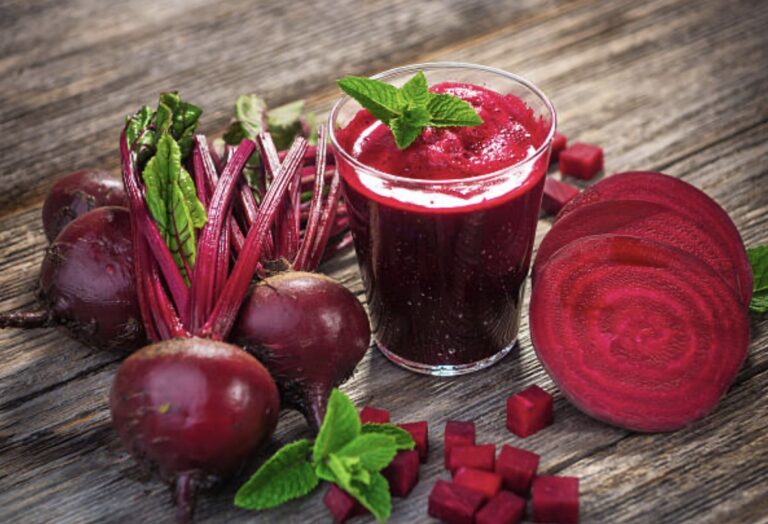
Beets and Digestive Health
Dietary Fiber in Beets: Aiding Digestion
What’s happenin’, colon? Beets are here to get things moving! Their high dietary fiber keeps your digestive system in great shape – call it the food version of gut-friendly yoga.
Beets’ Role in Detoxification Processes
Beets’ rich color isn’t just for show; they get it from betalains, powerful antioxidants that play clean-up crew for your liver and blood. So, next time you need a detox after binging an entire pizza, reach for a beet!
Beets and Gut Health: Fostering Good Microbiota
Beets are like the perfect hosts to your gut party. Prebiotic sugars in beets feed the good gut bacteria (yes, they exist!), leading to a balanced gut microbiota.

Beets and their Role in Vision and Skin Health
Beets and Eye Health: An Insight
Your mom was right; you should finish veggies on your plate. But what she missed telling you is that beets can be equally beneficial for your eyes. The vitamin A in beets is like a ‘see-food’ diet for your eyes!
How Beets Promote Healthy Skin
“Mirror, mirror on the wall, who’s the fairest of them all?” With regular beet consumption, it could be you! Beets are loaded with vitamin C, which promotes collagen production for a firm and vibrant complexion.
Addressing Common Myths: Beets and Skin Pigmentation
Here’s a shocker—despite their rich hue, eating beets won’t turn you into Shrek’s cousin! The skin doesn’t absorb beets’ pigments. In fact, they’re a sign of a well-functioning liver: the better it works, the quicker you excrete the pigments.
Cancer Prevention and Beets
Antioxidant Components in Beets: Promoting Cellular Health
Put on your superhero cape; we’re fighting some bad guys called “free radicals.” Beets’ betalains and other antioxidants prevent these villains from causing damage to your cells.
How Beets Contribute to DNA Protection
Beets do their bit in the genetic world too. They have folate, a vital nutrient for DNA and RNA synthesis, and play a proactive role in DNA repair.
Beets’ Potential as Chemopreventive Agents
Ongoing research is keen on exploring beets’ potential in cancer prevention – a truly noteworthy area where this humble veggie may make grand strides.
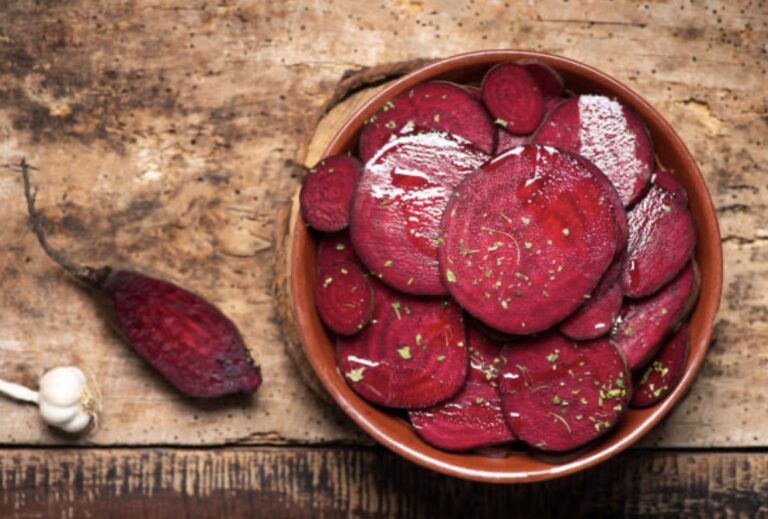
Recapitulation: The Salient Benefits of Beets
Beets, the Vibrant Veggies (VV, if you will), have secured their place in the hall of health fame. From bolstering cardiovascular and digestive health, boosting physical performance, upholding eye and skin health, to possibly aiding in cancer prevention—beets have got us covered.
Precautions and Considerations: When to Go Easy on Beets
Of course, even too much of a good thing can turn sour. If you’re predisposed to kidney stones or have issues with oxalates, you’ve got to go easy on these ruby-red roots.
The Perfect Roasted Beets Recipe
Ingredients:
The main ingredients include beets, some olive oil, salt, pepper, and some of your favorite herbs such as rosemary. I also like to mix it up and use both purple and golden beets.
Preparing The Beetroot
Wash the beets, peel off the skin, and chop them into chunks
Preheat your oven to 400 degrees F (200 degrees C).
Tossing The Beetroot In Olive Oil
Spread the beets in a tray and drizzle with olive oil, salt, and pepper to taste.
Roasting Process
Roast the beets in the preheated oven for about 35-40 minutes or until they are tender.
Checking The Readiness
The beets should be easily pierced with a knife when they are done.
Serve your roasted beets while they are still hot and enjoy their natural taste. Add some fresh herbs for flavor and decoration.
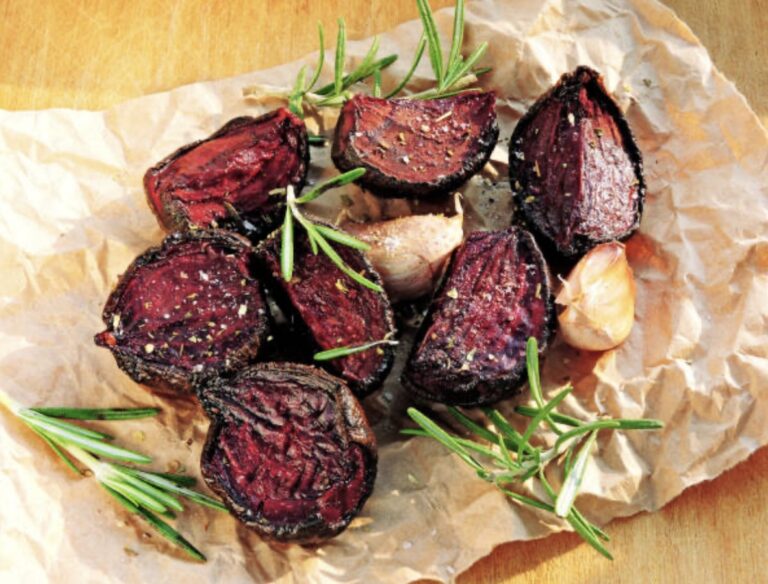
How To Grow Your Own Beets
Red, Ripe, and Right At Home: An Easy Guide To Growing Beets In Your Backyard
Every gardener loves the thrill that comes from reaping the fruits of their labor, and today, I’m here to talk about a super exciting, easy-to-grow veggie; the humble beetroot. Popular for its rich, earthy flavor and packed with health benefits, growing beets will add a new level of excitement to your gardening journey!
The Preparation Stage: Soil, Sunlight and Seed Selection
The Perfect Soil for Beets
The beetroot loves a good, loosened soil. If your soil is heavy and clay-like, adding some sand and compost can greatly improve drainage, ensuring that your beets don’t get waterlogged. A soil pH between 6.0 and 7.0 is typically ideal for growing a healthy crop of beets.
Location, Location, Location
Next, pick a sunny spot in your garden, as beets require a good six hours of sun exposure every day to grow to their full potential.
Seed Selection Matters
There are also many varieties of beetroot seeds to choose from based on your personal preferences, each with a unique flavor and size. If you prefer a classic, deep red beet, the ‘Detroit Dark Red’ is a popular choice. However, if you are looking for something a bit more unique, the ‘Golden’ or ‘Chioggia’ varieties offer beautifully vibrant colors.
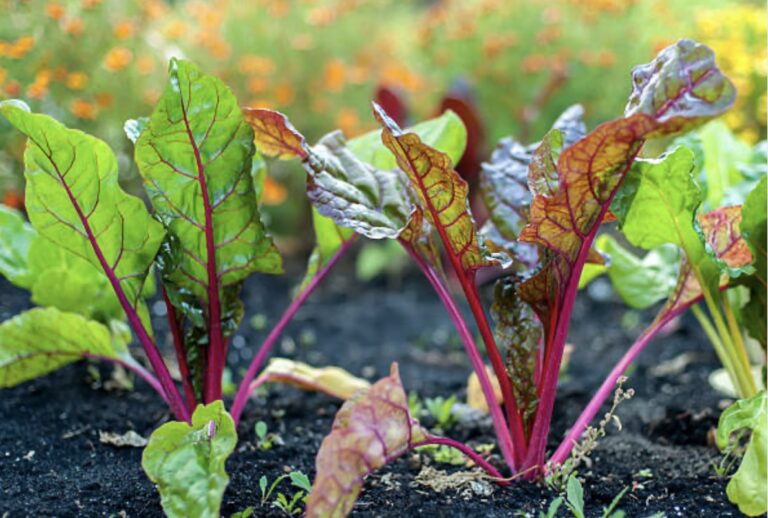
Planting Time: Sowing Your Beetroot Seeds
Once you’ve got your soil primed and your desired seeds at the ready, it’s time to get your hands dirty!
When to Plant
Beets are typically sown in late spring to early summer, but as resilient plants, they can stand up fairly well to cooler temperatures.
Sowing Your Seeds
Plant your seeds about one inch deep into the soil, leaving about one to two inches of space between each. Water them lightly and wait for the magic to happen in the next two to three weeks.
The Waiting Game: Caring for Your Growing Beets
While gardening is indeed a great exercise of patience, there are a few easy tips to make sure your beet crops stay healthy as they grow.
Watering Your Beets
Be sure to water your crops regularly to keep the soil from drying out.
Dealing with Weeds
Keep an eye out for any pesky weeds that may rob your precious beets of their nutrients, Be vigilant and uproot these as soon as you see them.
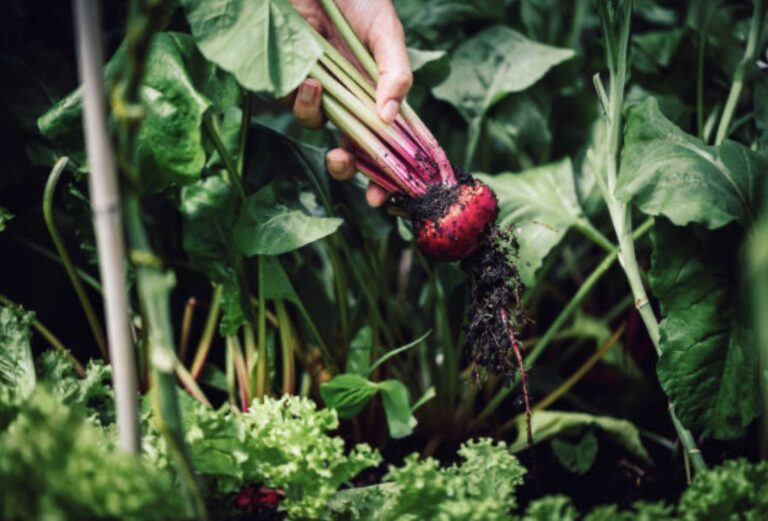
The Exciting Part: Reaping Your Beetroot Rewards
When you start noticing the top of your beets peeking out from the soil, that’s your cue that they’re ready to harvest. A typical growing period for beets ranges between 50 to 70 days.
When it’s time to harvest, gently pull the beetroot from the ground. And voila – you have successfully grown your own beets!
Growing your vegetables can be a rewarding and nourishing experience, and beets are a fantastic crop to start with. With their robust flavor and rich color, not to mention their hearty nature and high nutrient content, it’s no wonder that so many gardeners – whether novice or veteran – love to make room in their garden for these tasty and vibrant veggies.
So, are you ready to give beet-growing a shot? I promise, your tastebuds and your health will thank you for it! Happy gardening!
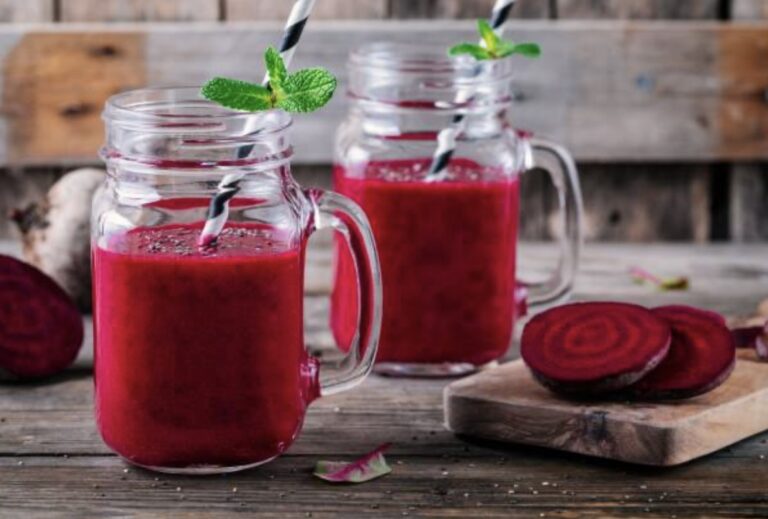
Get Juiced: A Simple Guide To Making Beet Juice for Weight Loss
We all know the struggle of trying to lose weight. You’ve spent countless hours in the gym and tried every diet craze, and yet, those pesky extra pounds refuse to budge. But have you ever thought of including beet juice in your diet for weight loss? Beets, with their rich nutritional profile, can be your secret weapon in your weight loss journey. Besides being a low-calorie beverage, beet juice is a great source of nutrients and fiber.
Beet Juice: The Crimson Elixir of Health
Beets have been hailed as a superfood due to their numerous health benefits, which go beyond weight loss. They are known for their high levels of antioxidants, vitamins, and minerals. Plus, they can boost your energy levels, making them a perfect addition to your pre-workout smoothie. The nitrate levels present in beets can increase blood flow, improve lung function, and strengthen muscle contraction.
The Tasty Weight Loss Trick
Even though beets naturally have a sweet flavor, their sugar is released slowly into the bloodstream, which helps to control blood sugar spikes. This slow-release mechanism can keep you satiated for longer, helping in your weight loss efforts.
Crafting the Perfect Beet Juice
Before you dash off to your nearest organic market, it’s important to know that making your own beet juice can be both cost-effective and satisfying. All it takes is some fresh beets, a juicer (or a blender), and a sprinkle of excitement to prepare this delicious recipe.
Choose Your Beet
Look for medium-sized beets that are firm and have smooth skin. Smaller beets are usually more tender and sweeter. Ensure that the beets are fresh and their green tops are intact.
The Sweet Step-By-Step Guide
Thoroughly rinse the beets under running water, scrubbing the skin gently to remove any dirt.
Trim off the beet tops and the root end.
Cut the beets into small chunks (if you’re using a juicer, you can leave them whole).
If you’re using a juicer, simply process the beets. If you’re using a blender, add a little water to the beet chunks and blend until smooth.
Strain the beet blend through a cheesecloth or fine-mesh strainer.
Serve chilled or add some ice for a refreshing touch.
Keep it Interesting
To kick things up a notch and vary your taste experience, consider adding other fruits and vegetables to your beet juice. Carrots, cucumbers, or pineapples can provide a lovely taste contrast and additional benefits. Bottoms Up!
There you have it – a tasty, healthy, and simple juice to add to your weight loss arsenal. Remember to consume beet juice in moderation as part of a balanced diet to ensure you’re getting a broad spectrum of nutrients. So why not give beet juice a try? Your scales just might thank you! Beets, ready, go!
Frequently Asked Questions
Hate to burst your bubble, but beets aren’t magical weight-loss bullets. However, with their high fiber and water content, beets do help keep you full, aiding in weight management.
While beets contain sugars, they also have a low Glycemic Index, which means they don’t spike blood sugar levels unnecessarily. Be sure to balance your carb intake, and you’ll find beets are your sweet friends!
Cooking can reduce some nutrient content, so the closer to raw you eat your beets, the better. Juicing or grating into salads are great ways to enjoy those benefits. Just remember, beets can stain your fingers. But hey, look on the bright side—it’s like having an impromptu painting session!



1 thought on “The Amazing Health Benefits Of Beets”
I sometimes throw some chives and feta cheese on top of my roasted beets. Goes good with any dish, but I love it with salmon